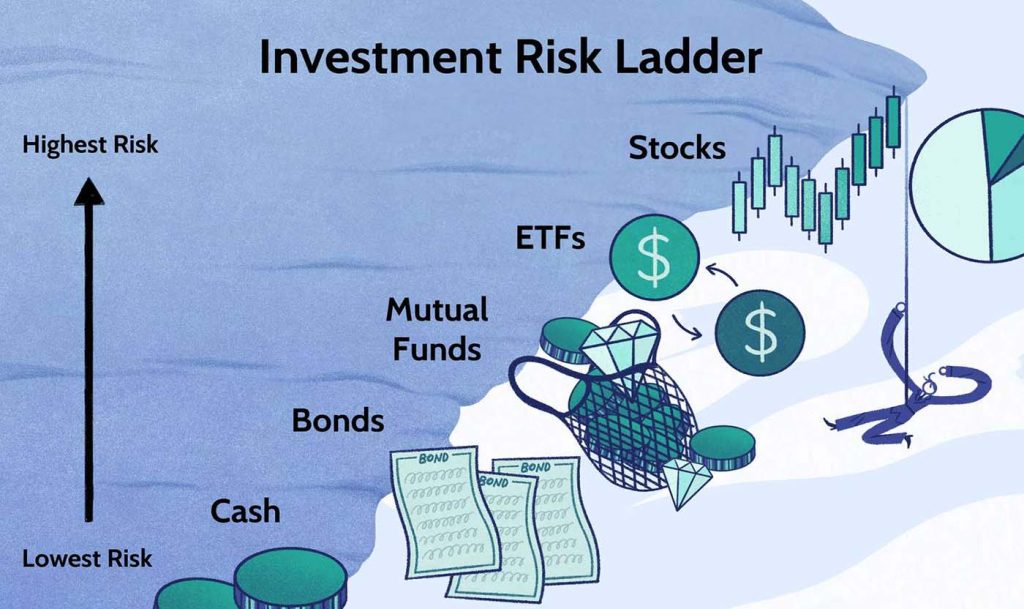As we reach the end of 2024, we can see that the world of investing has become more accessible than ever before. Thanks to the wealth of information available online, anyone with an internet connection can learn the ins and outs of investing—whether you’re interested in stocks, bonds, mutual funds, or real estate. But the real challenge, especially for beginners, lies in navigating the overwhelming amount of content and ensuring that you’re learning in an efficient and effective manner.
When I first started learning about investing, I faced many of the same obstacles that many of you might be experiencing now—uncertainty about where to begin, confusion over complex jargon, and a lack of clear direction on how to move forward. I spent years piecing together information, experimenting with different approaches, and slowly gaining an understanding of how the markets worked. But it wasn’t until I adopted a systematic approach to self-learning that I really began to see results.
In this article, I will share my step-by-step journey on how to learn investment knowledge efficiently. Whether you’re just starting with the basics or looking to deepen your understanding, this guide will help you create a structured path from zero to mastery. I’ll also recommend some of the best online resources, tools, and websites to assist you along the way.
1. Start with the Basics: Building a Strong Foundation
Before diving into the world of stocks, ETFs, and complicated financial statements, it’s crucial to start with the basics. Think of this as laying the foundation for your investment journey. Without a strong understanding of the fundamental concepts, you’ll likely struggle when it comes to more advanced topics.
Key Concepts to Understand First
- What is Investing? At its core, investing is the process of putting your money into financial assets (like stocks, bonds, and real estate) with the expectation that it will grow over time. But before getting into individual asset classes, make sure you understand why investing is essential for wealth-building.
- Risk and Return: The relationship between risk and return is fundamental to investing. Typically, the higher the potential return, the higher the risk. Understanding this balance is key to determining your investment strategy.
- Asset Classes: Familiarize yourself with the different types of assets that exist in the market—stocks, bonds, real estate, commodities, and more. Each asset class has its own characteristics, risk profile, and investment potential.
- Time Value of Money: This concept explains how money today is worth more than the same amount in the future due to its potential to earn returns. Learning this concept is essential for understanding interest rates, inflation, and the importance of long-term investing.
How to Learn the Basics
To get started, there are many high-quality, free resources available to learn the basics. Here are a few suggestions:
- Investopedia (www.investopedia.com): This website is an excellent starting point for beginners. It offers easy-to-understand articles, videos, and tutorials on all the core concepts of investing.
- Morningstar (www.morningstar.com): Morningstar’s educational content is especially useful for beginners looking to understand mutual funds, ETFs, and other financial instruments.
- YouTube Channels: There are several YouTube channels dedicated to teaching investing basics, including channels like Graham Stephan and The Financial Diet. These creators break down complex topics in a way that’s digestible for beginners.
Starting with these resources, I spent the first few months learning basic investing principles, and I recommend you do the same. Understand the concepts, but don’t rush into investing just yet.

2. Develop a Strategy: The Importance of Goal Setting
Once you have a foundational understanding of investing, the next step is to figure out why you’re investing in the first place. What are your financial goals? Are you saving for retirement? A home? Or perhaps you want to build wealth over the long term?
Having a clear strategy is one of the most important steps in becoming a successful investor. A good strategy should align with your goals, risk tolerance, and timeline. It’s also essential to continually reassess your strategy as your circumstances evolve.
Key Elements of an Investment Strategy
- Risk Tolerance: Before you start investing, assess how much risk you’re comfortable with. If you’re more risk-averse, you might lean toward conservative investments like bonds or dividend-paying stocks. On the other hand, if you’re willing to take on more risk, you may opt for growth stocks or even speculative investments.
- Investment Horizon: Your timeline for investing plays a critical role in shaping your strategy. If you’re investing for retirement 30 years from now, you can afford to take on more risk. If you’re investing for a down payment on a house in five years, you may want a more conservative approach.
- Asset Allocation: This refers to how you divide your money among different asset classes (stocks, bonds, etc.). A balanced allocation can help reduce risk and improve the chances of earning a reasonable return over time.
How to Create Your Strategy
- Read Books: I recommend starting with classic investment books such as The Intelligent Investor by Benjamin Graham and A Random Walk Down Wall Street by Burton Malkiel. These books offer timeless strategies and frameworks for building a successful portfolio.
- Use Online Tools: Websites like Personal Capital (www.personalcapital.com) and Morningstar offer free tools to help you determine your risk tolerance and build a diversified portfolio.
- Mock Portfolios: One great way to practice without putting any money at risk is to create a mock portfolio. Many platforms allow you to simulate real trading to test your strategy.
3. Dive Deeper: Technical and Fundamental Analysis
Now that you have a basic understanding of investing and a strategy in place, it’s time to dive deeper into stock analysis. There are two primary ways to analyze stocks: fundamental analysis and technical analysis.
Fundamental Analysis
Fundamental analysis involves studying a company’s financial health, performance, and potential for growth. This includes analyzing financial statements, such as income statements, balance sheets, and cash flow statements.
- Earnings Reports: Learn to read quarterly earnings reports. Key metrics to look for include revenue growth, profitability, and operating cash flow.
- Valuation Ratios: Familiarize yourself with ratios such as Price-to-Earnings (P/E), Price-to-Book (P/B), and Price-to-Sales (P/S). These ratios help you evaluate whether a stock is overvalued or undervalued.
- Qualitative Factors: In addition to the numbers, look at a company’s competitive advantages, leadership, industry trends, and other qualitative factors.
Technical Analysis
Technical analysis involves studying past market data, primarily price and volume, to forecast future price movements. Key tools include:
- Charts and Patterns: Learning to read charts and patterns can help you predict short-term price movements. Common patterns include head and shoulders, triangles, and support and resistance levels.
- Indicators: Learn how to use indicators such as moving averages, RSI (Relative Strength Index), and MACD (Moving Average Convergence Divergence).
How to Learn Analysis
- Investing Websites: Websites like Yahoo Finance (www.finance.yahoo.com) and StockCharts (www.stockcharts.com) provide excellent resources for learning both fundamental and technical analysis.
- Books: Books like Common Stocks and Uncommon Profits by Philip Fisher (for fundamental analysis) and Technical Analysis of the Financial Markets by John Murphy (for technical analysis) are great resources.
- Online Courses: Platforms like Coursera and Udemy offer courses in both fundamental and technical analysis. These courses often come with practical exercises and case studies to help you apply what you’ve learned.
4. Start Practicing: Invest with Small Amounts
Once you feel comfortable with your knowledge of stock analysis, it’s time to start applying what you’ve learned. I always recommend starting with small amounts of money—just enough to test your strategies but not enough to cause significant losses.
Steps for Practicing
- Start with ETFs: Exchange-Traded Funds (ETFs) are a great way to start investing without picking individual stocks. They allow you to invest in a diversified portfolio with a single trade, which can reduce risk.
- Practice with Paper Trading: Many platforms offer paper trading or simulated accounts. This is an excellent way to test your strategies without risking real money.
- Gradually Increase Your Investment: Once you feel confident with your practice trades, consider increasing your investment amounts slowly. The key is to build your confidence and expertise over time.

5. Keep Learning: Stay Updated and Evolve
The world of investing is constantly evolving, so it’s important to keep learning. As new strategies and financial instruments emerge, you should stay updated on the latest trends and developments.
How to Stay Updated
- Follow Financial News: Websites like CNBC (www.cnbc.com) and Bloomberg (www.bloomberg.com) offer real-time news and insights into the financial markets.
- Listen to Podcasts: There are several great investment podcasts, such as The Motley Fool Money and Invest Like the Best, that provide ongoing insights into the markets and investment strategies.
- Join Investment Communities: Engaging with communities like those on Reddit’s r/investing or StockTwits can help you stay in the loop and learn from other investors.
Learning how to invest is a lifelong journey, but by following a structured approach, you can move from a beginner to a more confident, knowledgeable investor. Start by mastering the basics, then develop your strategy, dive into analysis, practice with small amounts, and, most importantly, keep learning. The more you immerse yourself in the world of investing, the more natural it will feel.
Remember that investing isn’t about making quick money—it’s about building wealth over time. Stay disciplined, be patient, and continue refining your skills. The journey from zero to mastery in investing is entirely possible with the right mindset and tools.
Good luck on your journey to financial mastery!



